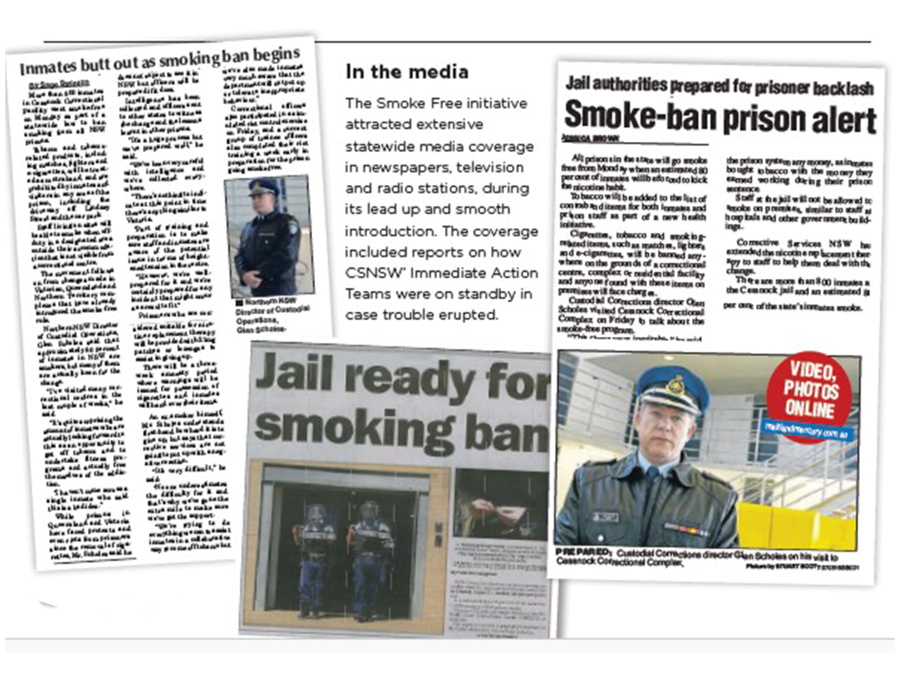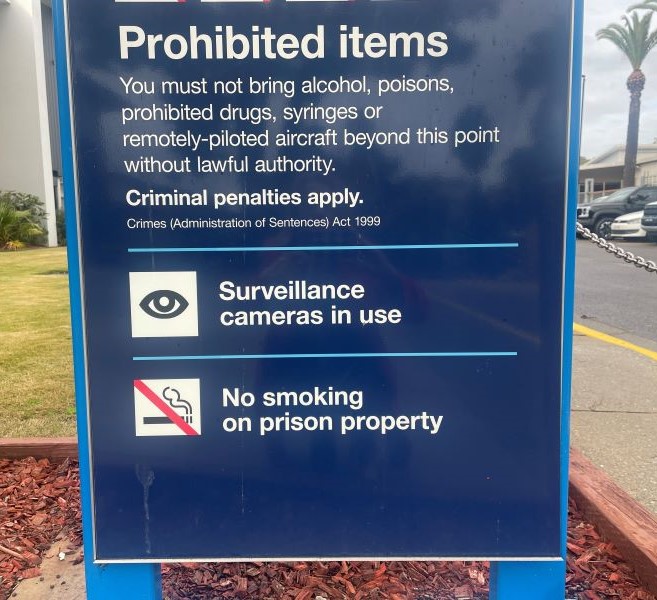Automatic language translation
Our website uses an automatic service to translate our content into different languages. These translations should be used as a guide only. See our Accessibility page for further information.
8 AUGUST 2025
Imagine telling 8,000 people that they can no longer smoke in the place they call home. And imagine these are people who aren’t exactly known for following the rules—many of them aren’t afraid to push boundaries, and some don’t worry too much about the consequences. This is exactly what happened 10 years ago when Corrective Services NSW banned smoking in all correctional centres.
It was reported at the time that approximately 80% of inmates smoked, a figure five times higher than the state average, and tobacco was a hot commodity inside. Suddenly inmates would lose access not only to an addictive substance but also one they used as currency.

On 10 August 2015, smoking was banned on the grounds of every NSW correctional centre, including outdoor areas, car parks and visitor processing areas.
Cigarettes, tobacco, and smoking-related items such as matches, lighters and e-cigarettes were also banned.
Alcohol, Tobacco & Other Drugs Counsellor Matt Nelson worked on the ‘smoke-free’ project and described it as a challenging task but one that was meticulously planned.
“I recall that the Smoke-free Prison project team were working at least 18 months out from 10 August, meeting with all stakeholders including management, employees and inmates,” he said.
“There was some resistance, even from some staff who didn’t smoke but Nicotine Replacement Therapy (NRT) was offered to anyone who asked— staff and inmates.”
NRT in the form of patches and nicotine lozenges was available for 8 weeks initially, prompting the Chair of NSW Justice Heath to declare we had “just about cornered the market on nicotine patches”.
Inmates were provided with distractions to take their minds off smoking, including sporting equipment, board games and playing cards. The cards included tips for managing cravings and withdrawal, although sources say the inmates came up with their own creative ways to manage cravings including the inventive ‘teabacco’ - a mix of crushed lozenges and NRT patches soaked in tea leaves and then dried out to be smoked or crushed lozenges smoked in bongs.
Matt Nelson believes the program was an absolute success, for all involved.
“Every prison used to reek of tobacco. Even after the ban, there was still the smell of stale tobacco in the wings for months. But every person who quit for good has added years to their lifespan, and non-smokers are no longer exposed to passive smoking in their work environment.”
Despite the odds, the transition to smoke-free prisons in NSW was surprisingly smooth. There were no riots, no mass protests, and no one tore the place down. Inmates, many of whom had relied on tobacco not just for the habit but as a form of currency, adapted with resilience and even a bit of creativity… ‘teabacco’ anyone?
There may have been an increased demand and more money available for tuna, noodles and sweet treats that had been ignored in favour of spending all their money on tobacco, and inmates turned more towards protein bars and protein powders, but satisfying hunger is not really a vice.

Thanks to months of planning, support from staff, and access to nicotine patches and lozenges, the change was rolled out with minimal disruption. Distractions like sports gear and playing cards helped, and the air in correctional centres became noticeably cleaner.
Ten years on, the success of the smoke-free policy speaks for itself. What could have been a volatile, high-risk shift turned out to be a quiet revolution in public health—one that added years to lives and cleared the air for everyone.
Last updated:
We acknowledge Aboriginal people as the First Nations Peoples of NSW and pay our respects to Elders past, present, and future.
Informed by lessons of the past, Department of Communities and Justice is improving how we work with Aboriginal people and communities. We listen and learn from the knowledge, strength and resilience of Stolen Generations Survivors, Aboriginal Elders and Aboriginal communities.
You can access our apology to the Stolen Generations.